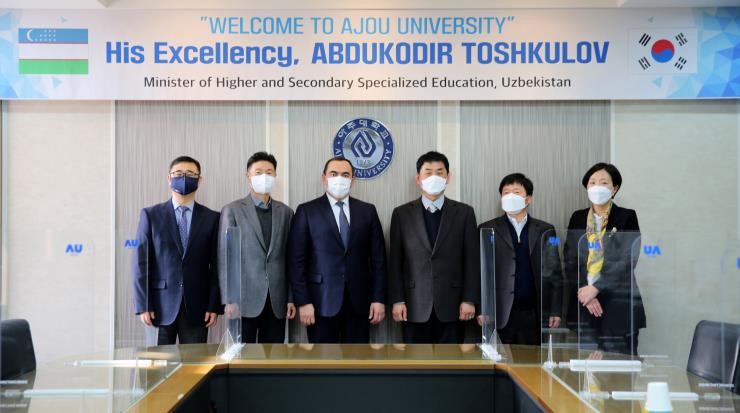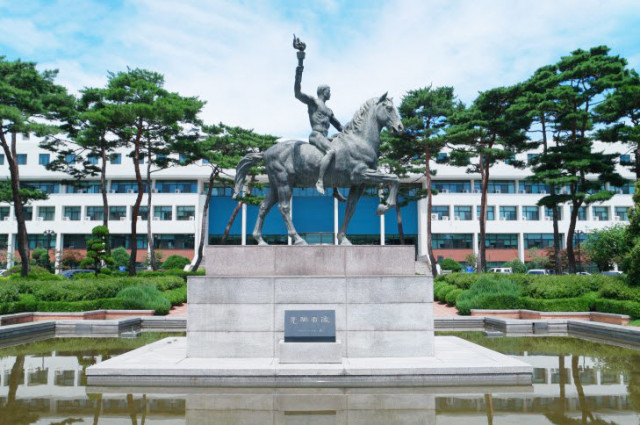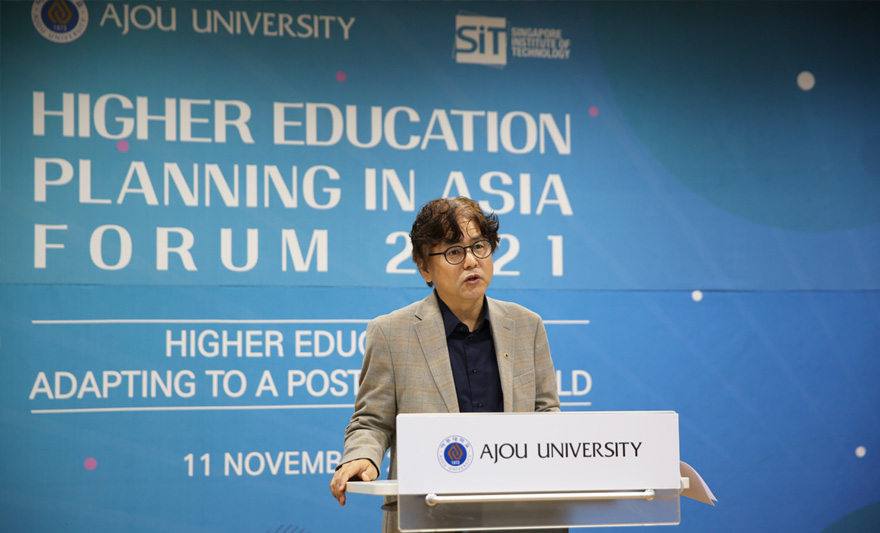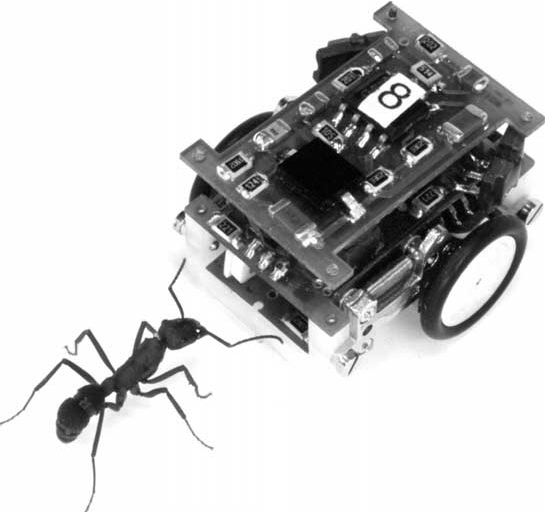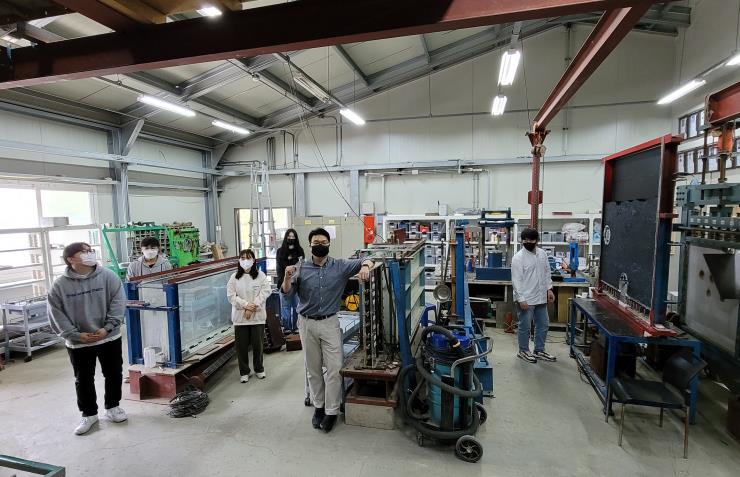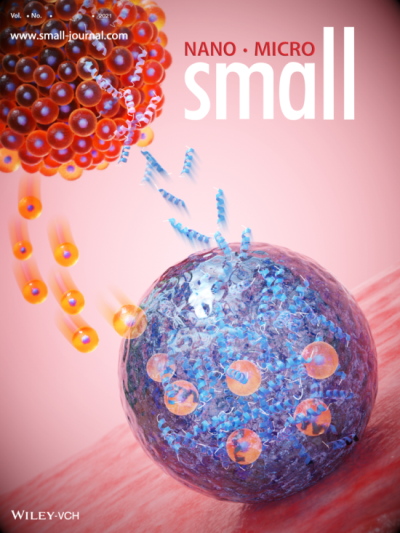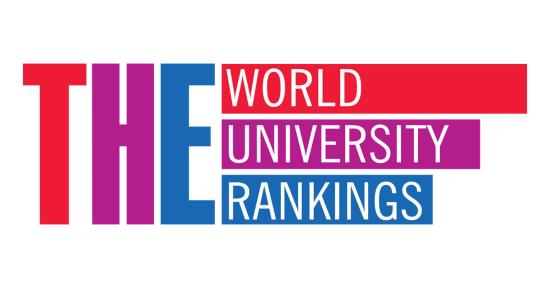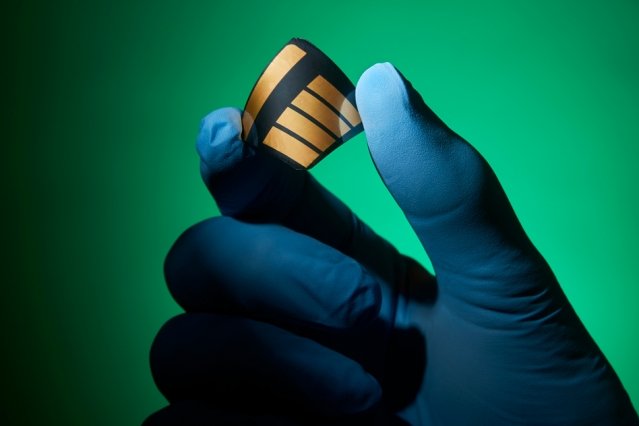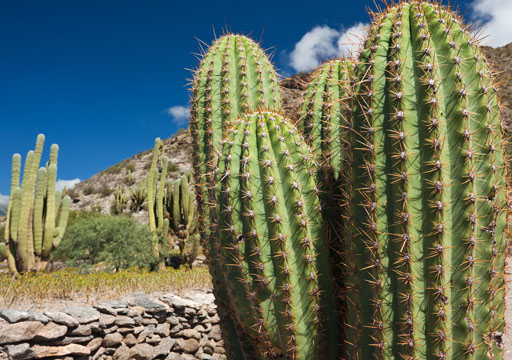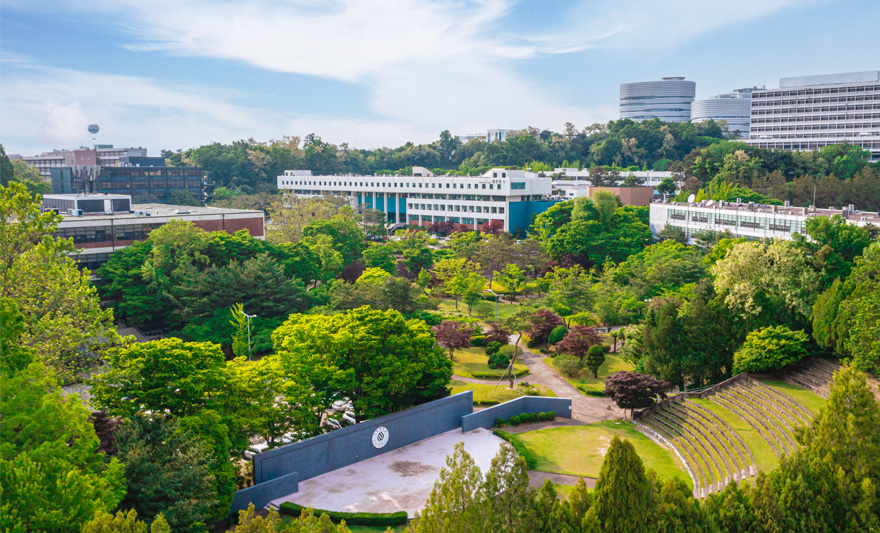-
The Minister of Higher and Secondary Specialized Education of Uzbekistan visited Ajou University and discussed potential areas for cooperation in education.On December 16, 2021, a delegation headed by Uzbekistan’s Minister of Higher and Secondary Specialized Education, Abdukodir Toshkulov, visited the Ajou University campus and met with President Park Hyung-ju and the university’s key executives. The two sides discussed cooperation in education, including the development of human resources, and the search for new areas of cooperation, such as energy. The Minister also met with Uzbekistan students studying at the University.This visit was arranged in relation to the official three-day state visit from December 16 by Uzbekistan President Shavkat Mirziyoyev on invitation from Korean President Moon Jae-in. Minister Toshkulov will accompany the President during his stay in Korea.In February this year, the University signed an agreement with the Uzbekistan government and worked closely to pursue cooperation in the field of higher education. Recently, the Uzbekistan government has made many efforts to advance the country’s higher education, including actively attracting international universities.
-
539
- 작성자OIA
- 작성일2021-12-28
- 6108
- 동영상동영상
-
Ajou University ranks 11th in Korea JoongAng Daily [KHTC1]University Rankings, leading in student education and technology transferAjou University ranked 11th in the 2021 Korea JoongAng Daily University Rankings, leading particularly in student participation in workplace internships, student education, and technology transfer income per member. Released on November 10, the 2021 Korea JoongAng Daily University Rankings assessed 44 four-year universities with at least four colleges among the humanities, social sciences, engineering, natural sciences, medicine, and the arts and physical education. The evaluation is based on four categories: faculty research, educational environment, efforts and achievements in student education, and reputation.Ajou University received 159 points on the evaluation, coming in at joint 11th place. Previously, it ranked 11th for two consecutive years (2018 and 2019). However, due to the COVID-19 crisis, the evaluation was not conducted last year. In particular, Ajou University ranked sixth in efforts and achievements in student education, which evaluates student employment and participation in startup businesses. Specifically, the university performed well in terms of student participation in workplace internships (second) and support for student participation in startup businesses and performance (ninth). In relation to Ajou’s collaboration projects with local businesses, the Korea JoongAng Daily noted that Ajou had ranked second in student participation in workplace internships thanks primarily to Ajou’s industry-friendly program, entitled “One Person, One Company, One Achievement,”[KHTC2] which encourages freshmen and sophomores to put theory into practice and enables juniors and seniors to develop their adaptability and practical skills through an industry-academia cooperation-friendly curriculum and practical work experience. In fact, the university offers a wide range of internship opportunities to increase students’ exposure to diverse workplaces and allow them to apply their theoretical knowledge in the real business world. Amid the COVID-19 pandemic last year, more than 1,000 students participated in internship programs. In the faculty research category, Ajou ranked seventh in technology transfer income per member (KRW 14.52 million). Ajou has achieved great success in technology commercialization, showing an upward trend in terms of revenue from technology transfers over the past five years. Ajou recorded KRW 3.35 billion in technology transfers in 2020, putting it in seventh place. For 2020, the average technology transfer revenue of all universities in Korea that participated in the disclosure of such information to the Ministry of Education this June was KRW 710 million. In this year’s evaluation, Seoul National University ranked first place, followed by Yonsei University (second), Hanyang University (third), Sungkyunkwan University (fourth), and Korea University (fifth). The Korea JoongAng Daily applies 33 criteria for a maximum of 300 points in such four categories as faculty research (10 criteria, 95 points), educational environment (12 criteria, 95 points), efforts and achievements in student education (7 criteria, 80 points), and reputation (4 criteria, 30 points). This year, the Korea JoongAng Daily raised the maximum number of points for employment, employment retention, and increased the criteria for student participation in startup businesses. Source: 2021 Korea JoongAng Daily University Rankings, JoongAng Daily Website
-
537
- 작성자OIA
- 작성일2021-11-19
- 5857
- 동영상동영상
-
-
535
- 작성자OIA
- 작성일2021-11-19
- 4187
- 동영상동영상
-
An Ajou University research team has developed a miniaturized robot (gripper) in the shape of a finger that can accurately measure the slightest pulse or heartbeat of living organisms. It is expected to be applied in the future as a bio medical robot since it can monitor bio signals by gently holding the cardiovascular system of tiny living organisms or a person.The research team, led by Professors Han Seung-yong, Kang Dae-shik, and Koh Je-seong (photo from left, Department of Mechanical Engineering), announced their successful development of a miniaturized, high precision soft gripper 3 – 5 mm in size that imitates the functions of a human hand.The team’s research results were published in the October 13, 2021 online edition of the prestigious Science Robotics under the title, “Vital signal sensing and manipulation of a micro-scale organ with a multifunctional soft gripper”. Noh Yeon-wook and Kim Min-ho, students in mechanical engineering at Ajou University, took part in the research as lead authors.The human hand is unique among the grippers of animals and plants that exist in nature, as its five fingers can move independently and are dense with sensory cells that allow delicate, accurate handling, and can identify the condition of an object. Since the 4th Industrial Revolution began, many studies are ongoing to imitate the abilities of the human hand in many fields, such as medical and other robots.Conventional grippers are mainly made of hard materials and cannot grip soft objects. Additionally, the installation of sensors to receive bio signals increases the size of these grippers, making them impossible to use with small living organisms. Miniaturized medical grippers require high precision control and integration with peripheral electronic devices and highly sensitive sensors and measurement.The Ajou research team used shape memory polymer of variable stiffness where hardness and softness can be controlled to allow creation of a gripper with properties similar to the skin of a living organism. It also utilized silver Nano wires and a laser process to miniaturize sensors and managed to reduce the robot to 5mm or less. Silver Nano wires elaborately control each of the five fingers of a soft gripper, while also serving as temperature sensors that can monitor the bio signals of the object it is measuring and also deliver heat stimulus.The soft gripper developed by the research team gripped a snail egg 3mm in diameter without damaging it, delivered heat to facilitate hatching, and measured the snail’s miniscule movements during hatching and its heartrate immediately after hatching (snail size: 400 – 699 micrometers). Furthermore, it gripped the blood vessel of a live pig to measure its pulse without hurting it, and managed to grip salmon roe, which are very delicate and easily damaged. The soft gripper itself weighs 25.4 milligrams but can momentarily lift objects up to 6400 times heavier than itself and continuously hold objects that are 1200 times heavier.“Existing research on grippers has only measured the signals of the object they grip, but this research enabled grippers to diagnose, analyze results, and provide treatment to the object,” said Prof. Han. “It can be used in the development of miniaturized medical robots and in new platforms to analyze the mechanical movement, stimuli, and response of living organisms at the level of a human cell, an area full of countless challenges.”He continued, “Through follow-up research, we plan to expand this into new directions, such as electrical stimuli, drug delivery, and wireless movement.”This research was sponsored by the Korean Ministry of Science and ICT (MSIT)’s Individual Basic Research (New Research) program.<The soft gripper is used to facilitate the hatching of a snail egg and measure its bio signals><Micro soft gripper developed by the research team><Using a soft gripper to grip salmon roe and other objects>
-
533
- 작성자OIA
- 작성일2021-11-16
- 4419
- 동영상동영상
-
Ajou University Professor Chang Il-han from the Department of Civil Systems Engineering succeeded in developing new construction material technology using microorganism-based biopolymer.Biopolymer, a macromolecule polysaccharide that generates microorganisms, is combined with earth and ground reinforcement technology that enable high intensity. It is gaining attention as an environmentally-friendly, low-carbon green technology that can replace cement in the field of construction.Prof. Chang’s research findings were announced in Issue 307 of the journal Construction and Building Materials and entitled, ‘Site application of biopolymer-based soil treatment (BPST) for slope surface protection: in-situ wet-spraying method details and strengthening effect verification’.Prof. Chang’s research team was joined by research teams from the Korea Institute of Civil Engineering and Building Technology (KICT) and theKorea Advanced Institute of Science and Technology (KAIST).Prof. Chang has been conducting research on green construction materials that can replace cement in ground reinforcement engineering. His focus is on using biopolymer.Soil combined with biopolymer displays high compression intensity, is highly resistant to erosion from water and wind, and facilitates generative growth. It is in the spotlight as a technology with applications to a variety of green construction fields and in the response to climate change, but had yet to be developed to the commercialization stage for use onsite.Prof. Chang’s research team developed a wet spray technology to allow the construction of high intensity biopolymer-earth surface layer that involves creating a soil, biopolymer and water mixture and spraying it on the construction surface.“This technology we developed creates a high intensity green surface stratum by mixing and spraying an earth, water and 0.5 – 1% biopolymer mixture. It is resistant to erosion from heavy rain and winds, and displays fast generative growth,” explained Prof. Chang.He added, “Application is expected not only for surface stabilization of mountain slopes, stream beds, high flow plains, and embankments, but also for restoring the ecosystems of earth’s surface in areas that have become wastelands due to wild fires or desertification.”It is currently undergoing a technology transfer to a business in green construction.
-
531
- 작성자OIA
- 작성일2021-11-16
- 4183
- 동영상동영상
-
With the beginning of second semester 2021, a variety of events were held for international students studying at Ajou University. The School’s International Exchange and Cooperation Office held an online orientation via ZOOM on August 27, which was attended by some 170 students, including exchange students in undergraduate and graduate programs, studying this semester and Global Supporter students. The program began with welcoming remarks by Ajou President Park Hyung-ju and was followed by an introduction of the School, information on university and Korean life, education to prevent sexual violence, and exchanges with Global Supporter students. It was an opportunity for students to build networks and acquire information on school life.In addition, colleges and graduate schools also held orientation events.The College of Humanities hosted a meeting for international students in the College of Humanities on September 14 to mark the beginning of the semester. Attended by some 60 people, including faculty and international students, information was provided on support for international students. The College of Humanities will operate an open-chat community for international students comprised of international and Korean teaching assistants (TAs) and assign international faculty as advisors for international students.Furthermore, the College of Humanities installed a Commission to Support International Students in the College of Humanities (Prof. Kim Yong-hyeon of French Language and Literature, Chairman) to review the curricula for international students, organize classes dedicated to international students, and plan and operate a variety of academic support programs.The orientation for first-year students in the Graduate School of International Studies was held online on September 17, with first-year students joining 56 recipients of KOICA and other state scholarships. The event offered an introduction to the Graduate School as well as information on adjusting to life in Korea.There are some 590 students from 38 countries studying at Ajou University this semester.The School offers a variety of programs for international students, such as A.G.A. (Ajou Global Ambassador), NUBI Ajou, and Major Helper[KHTC1]. Students can take advantage of features such as mentoring, cultural experiences, and field trips, and engage in international cultural exchange activities.*Photos:Students making the letter ‘A’ in ‘Ajou University’ during orientation (upper photo)Students attending orientation at the Graduate School of International Studies (lower photo)[KHTC1]“전공도우미” 임의번역하였습니다.
-
529
- 작성자OIA
- 작성일2021-11-16
- 4114
- 동영상동영상
-
An Ajou University research team has successfully developed a new peptide that can effectively induce endogenous stem cells that exist in every tissue of the human body. It is expected to have broad applications in the treatment of illnesses, such as myocardial infarction, degenerative arthritis, and rheumatic arthritis, since it can induce the regeneration of damaged human tissue without the injection of external stem cells.The joint research team of Prof. Choi Sang-dun (Department of Biological Sciences, Graduate School Molecular Science and Technology), Prof. Kim Moon-suk (Department of Applied Chemistry and Biological Engineering, Graduate School Molecular Science and Technology), and Medipolymer, Inc. announced the development of a new peptide substance that enables the migration of endogenous stem cells that is two or three times better than existing substances, through molecular pathogenic simulation. Medipolymer is a company developing stem cell treatments for incurable illnesses and self-healing.The results were selected as the cover thesis for the September 4, 2021 online edition of the international journal Small under the title, “Endogenous Stem Cell-Based In Situ Tissue Regeneration Using Electrostatically Interactive Hydrogel with a Newly Discovered Substance P Analog and VEGF-Mimicking Peptide”.Stem cells refer to undifferentiated cells that can differentiate into various types of cells. One stem cell can produce a variety of different cell types, and they have recently emerged as a new alternative for treatment of degenerative illness. In particular, the use of chemoattractant to facilitate tissue regeneration based on endogenous stem cells is at the center of focus. Endogenous stem cells are adult stem cells that exist in all human tissue, and recently, a new treatment is being developed that can control the microenvironment, which controls regeneration and multiplication of endogenous stem cells, without having to inject external stem cells.The research team developed a new peptide substance using substance P (SP) analog as chemoattractant. This is the first study involving the use of substance P analog (SP1), which has been newly developed through molecular pathogenic simulation and assesses the migration of endogenous stem cells.The research team used cationic chitosan and anionic hyaluronic acid to manufacture a substance with properties befitting a loading syringe that had no loss of SP1, and developed a new strategy around static electricity interaction. The SP1 discovered by the team confirmed that SP1 enhanced the migration ability of human mesenchymal stem cells by two or three times that of existing SP.In an animal test, the research team confirmed that SP1 pulled a large number of human mesenchymal stem cells toward the hydrogel, followed by the vascular endothelial growth factor mimetic peptide inducting vasculogenic differentiation. This discovery shows that SP1-loaded hydrogel may be a promising tool to facilitate the regeneration of endogenous stem cell-based tissues.“This new discovery will enable us to endogenously induce the regeneration of damaged human tissue without injecting external substances,” a spokesperson for the research team stated. “It will have dramatic applications in the treatment of illnesses, such as myocardial infarction, degenerative arthritis, and rheumatic arthritis.”The research was sponsored by the Creative Materials Discovery Program of the National Research Foundation of Korea (NRF) and the Research Facility Establishment Program (Molecular Science & Technology Research Center (MSTRC)).In situ tissue regeneration strategy based on endogenous stem cells. “In situ” means “in the original place, in the original position” in Latin. In stem cell research, it is used to refer to directly acting on the lesion requiring tissue regeneration.* Top photo- Selected figure from the research team’s thesis on the cover of Small (September 4, 2021 online edition) / provided by WILEY_VCH
-
527
- 작성자OIA
- 작성일2021-11-16
- 4277
- 동영상동영상
-
A research team led by Ajou University Professor Seo Hyung-tak has successfully developed an AI-based photovoltaic memory device that can imitate human visual capacity and store images and distinguish data. It is expected to find use in the development of artificial neural visual devices and applications in a variety of fields, including intelligent photovoltaic sensors, data processing, and robot engineering.Prof. Seo Hyung-tak (Department of Materials Science and Engineering, Graduate School of Energy Systems, center in photo) announced the development of an optical memory device that can detect optical image signals and store them in the form of non-volatile data, and conduct image storage programming according to input signals. This device is highly transparent and can be independently powered.The results were published in a thesis entitled, “Highly transparent reconfigurable non-volatile multilevel optoelectronic memory for integrated self-powered brain-inspired perception” in the August 27, 2021 online edition of Nano Energy (IF=17.881), an international journal in the field of nano technology. Ajou University’s Professor Mohit Kumar (right in photo) and master’s degree student Lim Jaeseong (left in photo) also took part in the research.The human visual perception system can detect optical signals in real time, and recognizes them differently according to intensity or repetition. Not only does it selectively save the received information in long-term or short-term memory, but it can also discern its importance. Human vision grasps optical information, encodes it into electrical spikes of appropriate sizes through photovoltaic transformation, and delivers the information to the visual cortex in the brain and stores it in the bio synapse network.As such, if the bio visual perception integrating optical signals detection and information storage can be imitated and made into a device, it can process intelligent visual information. With current technology, the optical sensor is separated from an information storage memory device. In addition, signal treatment devices are also needed to identify the meaning of the optical signals, and high-level video processing, primarily intelligent CCTVs, essentially require the composition of complicated hardware. An effective, simple humanoid photoelectric circuit design that can ultimately replace existing complicated circuits is needed to achieve a technological breakthrough. To simplify such circuits, signal processing and memory storage must be integrated so that the device can adjust to diverse environments, discriminate between information and store it.Ajou University’s research team developed Nano film (optical sensor) using high quality titanium dioxide (TiO2), and created a core-shell Nano column array (memory) combined with nickel and nickel oxide (NiO) to overcome this limitation and integrate non-volatile memory and intelligent optical sensor functions. Then, it developed the first-ever heterojunction device that evenly allocates nickel oxide film (optical switch) and silver Nano wire, and placed it in the top layer. The nickel oxide Nano column developed by the research team can securely collect and store photoelectric charges generated by the photoelectric current, serving as the core material for intelligent non-memory.The research team used Nano columns, combined with nickel and nickel oxide, to control the distribution of oxygen vacancy (vacancy created by the lack of oxygen in a metal oxide crystal), thereby ensuring safety. The width of a NiO Nano column is around 20-30 nanometers. In the measurement of photoelectric currents using atomic force microscopy (AFM), optical switching features seemed stable in an area of 30 nanometers, which means it can produce pixel intensity of 716GB per 1-inch area.The research team succeeded in imitating several functions of bio visual perception using the photovoltaic device they developed. It confirmed that the ultraviolet optical pulse signal that is input every 0.1 second can be strengthened or weakened in the long term to create intelligent non-volatile memory storage and programming. The intensity of optical signals, and the polarity and size can be used as variables to store and discern optical signals at multiple levels.The research team’s photovoltaic device can strengthen or weaken data by converting voltage even if the optical pulse signals are of the same intensity and number. This signifies it has the same effect as how visual data repeatedly perceived in a human’s visual perception remains in memory for a long time, whereas a one-time bit of visual data is quickly forgotten. The research team created a 5x5 pixel array with the developed devices and demonstrated how it can discern short messages.“The human visual perception system has an intensely complicated structure that cannot be made with integrated circuit devices using current technology,” said Prof. Seo. “Through this research, we managed to develop a simplified memory integrated optical sensor at the device level, which will be utilized in the future for development of an AI optical perception system.”Prof. Seo added, “With additional research and development, it will ultimately have broad applications, including intelligent CCTV, data processing, and robot engineering.”This research was sponsored by the General and Mid-Career Researcher Support Programs [KHTC1]hosted by the Korean Ministry of Science and ICT (MSIT) and the National Research Foundation of Korea (NRF).[KHTC1]“중견·기본 기초연구지원사업” 임의번역하였습니다.
-
525
- 작성자OIA
- 작성일2021-11-16
- 3176
- 동영상동영상
-
Ajou University ranked in the 601-800 range in THE World University Rankings 2022. Ajou saw improved performance in all fields, including education and research, over last year and tied for 8th place among domestic universities.Ajou University was recently included in the 601-800th rankings in the recently announced THE World University Rankings 2022. THE (Times Higher Education), a UK-based university assessment institution, annually publishes global university rankings along with QS (Quacquarelli Symonds). A total of 2112 universities from 99 countries took part in this year’s assessment.THE published the rankings of the top 1662 universities according to its assessment. Ajou University ranked in the 601-800 tier, similar to last year. It is 8th among domestic universities.Ajou University received scores in all assessment indicators that were higher than last year. THE uses 13 calibrated performance indicators in five sectors: Teaching, Research, Citations, International outlook, and Industry income. Ajou University’s performance saw particular improvement in Research and Citations.The University has been aggressively working to secure leading faculty and strengthen its research abilities, including setting up an “Excellent Thesis Award” based on a quality assessment, increasing research funding for new faculty (up to KRW 100 million in science and engineering and up to KRW 50 million in humanities and social studies), evaluating professor performance using a research quality assessment, awarding research grants to post-doc researchers, inviting notable researchers to Ajou during academic seminars overseas, and other activities.These efforts have led to tangible results, and Ajou University recorded KRW 3.35 billion in income from technology transfers last year, ranking it 7th in Korea, and multiples of the approximately KRW 710 million average income from technology transfers for domestic universities, according to the University Information Disclosure Services. Technology transfers are a major source of income and an indicator of research capacity for universities, where Ajou University has recorded a continuous rise for the past five years. Technology transfer income is revenue earned by the University for businesses to acquire the intellectual property rights to utilize the R&D results of university research teams.THE evaluates universities on Teaching, Research, Citations, International outlook, and Industry income using thirteen performance indicators. In THE World University Rankings 2022, the University of Oxford ranked 1st, followed by Harvard University and California Institute of Technology (tied for 2nd), Stanford University (4th), and University of Cambridge and Massachusetts Institute of Technology (MIT) (tied for 5th).Ajou University continues to see good performance in world university rankings announced by global university assessment institutions. It was included in the 531-540 group in the QS World University Rankings 2022, climbing the rankings for three years in a row. In THE Asia University Rankings 2021, it jumped 49 spots from last year to rank 130.
-
523
- 작성자OIA
- 작성일2021-11-16
- 3263
- 동영상동영상
-
A research team at Ajou University, led by Prof. Kim Jong-hyun, has developed a new approach to manufacturing perovskite solar cells that can generate high amounts of power without external sunshine, heralding the entry of solar cells that can use low-intensity indoor lighting instead. This development makes it possible for such lighting to serve as an independent indoor power source for Internet-of-Things (IoT) devices. Prof. Kim Jong-hyun (Department of Applied Chemistry and Biological Engineering, Graduate School of Molecular Science and Technology) announced that joint research, carried out alongside a research team led by Prof. Jan Seidel and Dr. Jae Sung Yun from Australia’s University of South Wales (UNSW), succeeded in identifying the core design principle of solar cells that can generate highly efficient power using indoor lighting.The joint research was published in the August 26, 2021 online edition of the international journal Advanced Energy Materials (IF29.3=68, JCR rank: 2.78%) and entitled, “Probing Charge Carrier Properties and Ion Migration Dynamics of Indoor Halide Perovskite PV Devices Using Top- and Bottom-Illumination SPM Studies”. Prof. Kim (right in photo) of Ajou University took part as the corresponding author and Shin So-jeong (left in photo), a student in the Master’s/Doctoral Integrated Program at Ajou University Graduate School of Molecular Science and Technology, as the lead author. Prof. Kim also served as advisor.Solar cells convert photovoltaic energy into electric energy, and are at the center of attention with the increase in the use of renewable energy. Existing solar cells were generally studied and developed to improve the conversion efficiency of photovoltaic energy into electric energy. With the recent emergence of the 4th Industrial Revolution, however, the demand for indoor IoT electronic devices for smart farms, smart homes, and smart factories, among others, is rising dramatically, and the development of solar cells for indoor application is being highlighted as a power source to enable their operation.The research team focused on perovskite, which effectively absorbs the light wave band of indoor lights. Perovskite, a hybrid organic/inorganic semi-conductor material with an ABX3 crystal structure, is gaining popularity in solar cells as it makes for highly-efficient energy conversion at low process unit cost. The team also revealed that grain boundary charge traps, which is generated by an interfacial defect in the perovskite layer and the electron transport layer, rapidly lowers the output value of solar cells in an environment with only indoor low-intensity light irradiation. By introducing an electron transport layer able to minimize interfacial defect, the team succeeded in optimizing perovskite solar cell output in an indoor lighting environment.This research finding is significant as it amounts to a discovery of the core design principle of solar cells that are highly-efficient in converting photovoltaic energy to electric energy in a low-intensity light irradiation environment, and suggests a way to develop solar cells that can produce high voltage energy using indoor lighting.“Through this research, we revealed the core principle to optimize conversion efficiency of perovskite solar cells in a low-intensity indoor light irradiation environment,” said Prof. Kim. “We are currently conducting R&D on introducing the high voltage perovskite solar cells we developed as the power source for IoT sensors to monitor the health of livestock at an Australian smart farm.”This research was conducted with grants from the Korea-Australia Strategic International Joint Research Project of the National Research Foundation of Korea (NRF), the Research Facility Establishment Program (Molecular Science and Technology Research Center (MSTRC)), and major programs of the Korea Research Institute of Chemical Technology (KRICT).<Research results on low-intensity output optimization of perovskite solar cells based on analysis and control of interfacial defects >
-
521
- 작성자OIA
- 작성일2021-11-16
- 3271
- 동영상동영상
-
A research team led by Lee Hwang, Professor of Architecture at Ajou University, developed a building façade module that automatically responds to changes in temperature similarly to the way a cactus does—by opening and shutting “stomata” to adjust its own temperature.Prof. Lee’s research team used smart materials and 4D printing to develop a temperature-sensitive building façade (visor) module. Related research findings were announced in the international Journal of Building Engineering on August 8, 2021. 4D printing is a technology that adds a time dimension to 3D printing, which prints three-dimensional shapes, thereby printing materials that change according to time.The research team used shape memory materials that change shape according to temperature to imitate how cacti open and close their stomata. Cacti breathe through their stomata and use them to control light and humidity, thereby helping them survive in the desert. The research team combined shape memory nickel titanium alloy with shape memory high polymer, which allows the shape memory alloy to contract as the temperature rises and close its visor to shut the sunlight out. As the temperature drops, the shape memory high polymer curves outwards to open the visor.With a miniaturized architectural structure, the research team verified that shape memory composite materials can be used to automatically open and shut an exterior wall according to temperature. Previous studies attempted to use “smart” materials that changed shape with the temperature, but their restoring force, which is the ability to return to their original shape, was poor and study proved to be limited accordingly. Prof. Lee’s research team combined nickel titanium alloy wire, which has little elasticity but significant restoring force, with shape memory high polymer, which has little restoring force but is very elastic. This combination enhanced the strain rate to 20%, and created a compound that repetitiously changes and restores without outside force.Heating and cooling buildings accounts for a large share of the energy used in non-industrial sectors. The technology developed by Ajou University’s research team is expected to contribute to lowering indoor cooling loads.“4D printing allows creation of a building that moves on its own using a variety of modules in a relatively easy and cost-effective way,” said Prof. Lee. “It can lower a building’s indoor cooling load and also be used in road shielding walls and solar panels.”This research was sponsored by the Research Leadership Program of the Korean Ministry of Science and ICT (MSIT) and the National Research Foundation of Korea (NRF).<Model of the research team’s building façade experiment – the façade opens and closes in accordance with the surrounding temperature.>
-
519
- 작성자OIA
- 작성일2021-11-16
- 3801
- 동영상동영상
-
A research team led by Prof. Kim Jae-ho of Ajou University was selected to take part in the R&D to Promote Utilization of Public Research Results Project to assist the accelerated commercialization of source and basic technologies.The Korean Ministry of Science and ICT (MSIT) and the Commercialization Promotion Agency for R&D Outcomes selected an intermediary research group in each of the five technology fields and launched its R&D to Promote Utilization of Public Research Results Project. The selected intermediary research group will receive a total of KRW 8.4 billion from the government R&D budget over the next three years.The MSIT supports intermediary research that advances the technical readiness level (TRL) in line with corporate demand to quickly put into practical use the excellent source and basic technologies possessed by universities or research institutes. Through this support project, the goal is to upgrade the source technology owned by public institutions with technology maturity levels 1 - 2 to technology maturity levels 6 – 7 where prototypes are manufactured and certified.The Intermediary Research Group on Nanotechnology-based Bio/Electronic Components Materials from Ajou University will participate in this project. Prof. Kim Jae-ho (Department of Applied Chemistry and Biological Engineering, Graduate School Department of Molecular Science and Technology) will lead the Group, which aims to commercialize six bio/electronic component materials based on nanoparticle in-plane alignment and patterning technology. 대면적 입자 정렬 기술Particle in-plane alignment technology식품안전검사시장Food safety inspection market시장 선점을 위한 기업의 높은 관심High corporate interest in seizing market leadership2세부과제Specific Task 2마이크로 LED 시장Micro LED market식중독 검사시장Food poisoning inspection market1세부과제Specific Task 1수요기업Corporation with demand마이크로 LED 본딩 필름 시장Micro LED bonding film market탈모증 치료제 및 헤어케어 화장품 시장Hair loss treatment and haircare cosmetics market마이크로 LED 테스트 소켓 시장Micro LED test socket market3세부과제Specific Task 3마이크로 LED 칩 검사 시스템 시장Micro LED chip inspection system market탈모 연구용 및 후보물질 스크리닝 kit 시장Hair loss research and candidate substance screening kit market4세부과제Specific Task 4세포배양 시장Cell culture 약물 스크리닝 시장Drug screening market약물 스크리닝 시장 (효능/독성 평가)Drug screening market (efficacy/toxicity evaluation)연구용 줄기세포 3D 세포배양 용기 시장3D Cell culture container market for research-purpose stem cellsAjou University’s Technology Licensing Office (TLO) will also participate in the project to support the four specific tasks and commercialization of the school’s Intermediary Research Group. Products to be commercialized included in the research group's four specific tasks are Micro LED bonding and inspection material (Kim Jae-ho, Ajou University Department of Molecular Science and Technology); Food harmful bacteria on onsite diagnostic equipment (Yoon Hyun-cheol, Ajou University Department of Molecular Science and Technology); Efficacy evaluation of hair loss relief and haircare products organoids (Seong Yeong-gwan, Kyungpook National University Medical School); and a Culture of induced pluripotent stem cells for drug screening (Jeong Yeong-seok, Pusan National University College of Pharmacy).In addition to taking part in the MSIT Project, the Intermediary Research Group agreed to transfer the technology that will be developed through this project to a pre-determined company that has demand for the technology. Accordingly, an advanced technology fee of KRW 3 billion and a current technology fee based on the sales of developed products are separately contracted, which is expected to contribute significantly to enhancement of the school's research and technology commercialization capabilities. Along with the school’s Intermediary Research Group on Nanotechnology-based Bio/Electronic Components Materials, the Intermediary Research Group on Microalgae Cell Factory (Korea Research Institute of Bioscience and Biotechnology), the Intermediary Research Group on Semiconductor Analog Batch Design Automation (Pohang University of Science and Technology), the Intermediary Research Group on Green Hydrogen Production (Korea Institute of Energy Research), and the Intermediary Research Group on Diagnosis-Treatment Technology Convergence Commercialization (Chonnam National University) will take part in the R&D to Promote Utilization of Public Research Results Project.
-
517
- 작성자OIA
- 작성일2021-09-06
- 5734
- 동영상동영상

